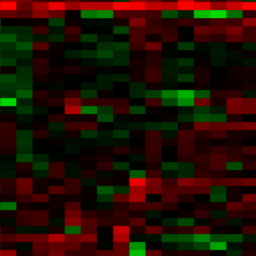A high-throughput and highly automated genotoxicity screening assay
Main Article Content
Abstract
The increasing number of compounds under development and chemicals in commerce that require safety assessments pose a serious challenge for regulatory agencies worldwide. In vitro screening using toxicogenomic biomarkers has been proposed as a first-tier screen in chemical assessment and has been endorsed internationally. We previously developed, evaluated, and validated an in vitro transcriptomic biomarker responsive to DNA damage-inducing (DDI) agents, namely TGx-DDI, for genotoxicity testing in human cells and demonstrated the feasibility of using TGx-DDI in a medium-throughput, cell-based genotoxicity testing system by implementing this biomarker with the Nanostring nCounter system. In this current study, we took advantage of Nanostring nCounter Plexset technology to develop a highly automated, multiplexed, and high-throughput genotoxicity testing assay, designated the TGx-DDI Plexset assay, which can increase the screening efficiency eight-fold compared to standard nCounter technology while decreasing the hands-on time. We demonstrate the high-throughput capability of this assay by eliminating concentration determination and RNA extraction steps without compromising the specificity and sensitivity of TGx-DDI. Thus, we propose that this simple, highly automated, multiplexed high-throughput pipeline can be widely used in chemical screening and assessment.
Article Details

This work is licensed under a Creative Commons Attribution 4.0 International License.
Articles are distributed under the terms of the Creative Commons Attribution 4.0 International license (http://creativecommons.org/licenses/by/4.0/), which permits unrestricted use, distribution and reproduction in any medium, provided the original work is appropriately cited (CC-BY). Copyright on any article in ALTEX is retained by the author(s).
Allemang, A., De Abrew, K. N., Shan, Y. K.. et al. (2021). A comparison of classical and 21st century genotoxicity tools: A proof of concept study of 18 chemicals comparing in vitro micronucleus, ToxTracker and genomics-based methods (TGx-DDI, whole genome clustering and connectivity mapping). Environ Mol Mutagen 62, 92-107. doi:10.1002/em.22418
Birkett, N., Al-Zoughool, M., Bird, M. et al. (2019). Overview of biological mechanisms of human carcinogens. J Toxicol Environ Health B Crit Rev 22, 288-359. doi:10.1080/10937404.2019.1643539
Black, H. S. (2002). Pro-oxidant and anti-oxidant mechanism(s) of BHT and beta-carotene in photocarcinogenesis. Front Biosci 7, d1044-55. doi:10.2741/a830
Brambilla, G., Mattioli, F., Robbiano, L. et al. (2010). Genotoxicity and carcinogenicity testing of pharmaceuticals: Correlations between induction of DNA lesions and carcinogenic activity. Mutat Res 705, 20-39. doi:10.1016/j.mrrev.2010.02.004
Buick, J. K., Moffat, I., Williams, A. et al. (2015). Integration of metabolic activation with a predictive toxicogenomics signature to classify genotoxic versus nongenotoxic chemicals in human TK6 cells. Environ Mol Mutagen 56, 520-534. doi:10.1002/em.21940
Buick, J. K., Williams, A., Gagné, R. et al. (2020). Flow cytometric micronucleus assay and TGx-DDI transcriptomic biomarker analysis of ten genotoxic and non-genotoxic chemicals in human HepaRG™ cells. Genes Environ 42, 5. doi:10.1186/s41021-019-0139-2
Cho, E., Buick, J. K., Williams, A. et al. (2019). Assessment of the performance of the TGx-DDI biomarker to detect DNA damage-inducing agents using quantitative RT-PCR in TK6 cells. Environ Mol Mutagen 60, 122-133. doi:10.1002/em.22257
Dix, D. J., Houck, K. A., Martin, M. T. et al. (2007). The ToxCast program for prioritizing toxicity testing of environmental chemicals. Toxicol Sci 95, 5-12. doi:10.1093/toxsci/kfl103
EFSA Panel on Food Contact Materials, Enzymes, Flavourings and Processing Aids (CEF), Silano, V., Bolognesi, C. et al. (2017). Safety of ethyl acrylate to be used as flavouring. EFSA J 15, e05012. doi:10.2903/j.efsa.2017.5012
Fowler, P., Smith, K., Young, J. et al. (2012a). Reduction of misleading (”false”) positive results in mammalian cell genotoxicity assays. I. Choice of cell type. Mutat Res 742, 11-25. doi:10.1016/j.mrgentox.2011.10.014
Fowler, P., Smith, R., Smith, K. et al. (2012b). Reduction of misleading (”false”) positive results in mammalian cell genotoxicity assays. II. Importance of accurate toxicity measurement. Mutat Res 747, 104-117. doi:10.1016/j.mrgentox.2012.04.013
Fujisawa, S., Atsumi, T., Kadoma, Y. et al. (2002). Antioxidant and prooxidant action of eugenol-related compounds and their cytotoxicity. Toxicology 177, 39-54. doi:10.1016/s0300-483x(02)00194-4
Geiss, G. K., Bumgarner, R. E., Birditt, B. et al. (2008). Direct multiplexed measurement of gene expression with color-coded probe pairs. Nat Biotechnol 26, 317-325. doi:10.1038/nbt1385
Judson, R. S., Houck, K. A., Kavlock, R. J. et al. (2010). In vitro screening of environmental chemicals for targeted testing prioritization: The ToxCast project. Environ Health Perspect 118, 485-492. doi:10.1289/ehp.0901392
Kirkland, D., Aardema, M., Henderson, L. et al. (2005). Evaluation of the ability of a battery of three in vitro genotoxicity tests to discriminate rodent carcinogens and non-carcinogens I. Sensitivity, specificity and relative predictivity. Mutat Res 584, 1-256. doi:10.1016/j.mrgentox.2005.02.004
Kirkland, D., Kasper, P., Martus, H. J. et al. (2016). Updated recommended lists of genotoxic and non-genotoxic chemicals for assessment of the performance of new or improved genotoxicity tests. Mutat Res Genet Toxicol Environ Mutagen 795, 7-30. doi:10.1016/j.mrgentox.2015.10.006
Krewski, D., Bird, M., Al-Zoughool, M. et al. (2019). Key characteristics of 86 agents known to cause cancer in humans. J Toxicol Environ Health B Crit Rev 22, 244-263. doi:10.1080/10937404.2019.1643536
Li, H. H., Aubrecht, J. and Fornace, A. J. (2007). Toxicogenomics: Overview and potential applications for the study of non-covalent DNA interacting chemicals. Mutat Res 623, 98-108. doi:10.1016/j.mrfmmm.2007.03.013
Li, H. H., Hyduke, D. R., Chen, R. et al. (2015). Development of a toxicogenomics signature for genotoxicity using a dose-optimization and informatics strategy in human cells. Environ Mol Mutagen 56, 505-519. doi:10.1002/em.21941
Li, H. H., Chen, R., Hyduke, D. R. et al. (2017). Development and validation of a high-throughput transcriptomic biomarker to address 21st century genetic toxicology needs. Proc Natl Acad Sci U S A 114, E10881-E10889. doi:10.1073/pnas.1714109114
Li, H. H., Yauk, C. L., Chen, R. et al. (2019). TGx-DDI, a transcriptomic biomarker for genotoxicity hazard assessment of pharmaceuticals and environmental chemicals. Front Big Data 2, 36. doi:10.3389/fdata.2019.00036
Loveday, K. S., Anderson, B. E., Resnick, M. A. et al. (1990). Chromosome aberration and sister chromatid exchange tests in Chinese hamster ovary cells in vitro. V: Results with 46 chemicals. Environ Mol Mutagen 16, 272-303. doi:10.1002/em.2850160409
Moore, M. M., Amtower, A., Doerr, C. L. et al. (1988). Genotoxicity of acrylic acid, methyl acrylate, ethyl acrylate, methyl methacrylate, and ethyl methacrylate in L5178Y mouse lymphoma cells. Environ Mol Mutagen 11, 49-63. doi:10.1002/em.2850110107
Shukla, S. J., Huang, R., Austin, C. P. et al. (2010). The future of toxicity testing: A focus on in vitro methods using a quantitative high-throughput screening platform. Drug Discov Today 15, 997-1007. doi:10.1016/j.drudis.2010.07.007
Suh, M., Proctor, D., Chappell, G. et al. (2018). A review of the genotoxic, mutagenic, and carcinogenic potentials of several lower acrylates. Toxicology 402-403, 50-67. doi:10.1016/j.tox.2018.04.006
Tennant, R. W., Margolin, B. H., Shelby, M. D. et al. (1987). Prediction of chemical carcinogenicity in rodents from in vitro genetic toxicity assays. Science 236, 933-941. doi:10.1126/science.3554512
Tibshirani, R., Hastie, T., Narasimhan, B. et al. (2002). Diagnosis of multiple cancer types by shrunken centroids of gene expression. Proc Natl Acad Sci U S A 99, 6567-6572. doi:10.1073/pnas.082099299
Venables, W. N. and Ripley, B. D. (2002). Modern Applied Statistics with S. New York, USA: Springer.
Yauk, C. L., Buick, J. K., Williams, A. et al. (2016). Application of the TGx-28.65 transcriptomic biomarker to classify genotoxic and non-genotoxic chemicals in human TK6 cells in the presence of rat liver S9. Environ Mol Mutagen 57, 243-260. doi:10.1002/em.22004


